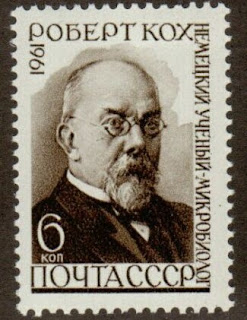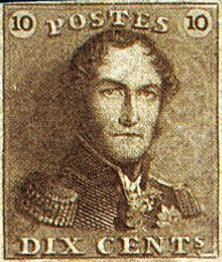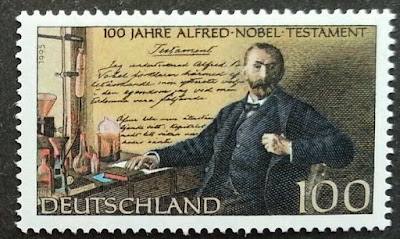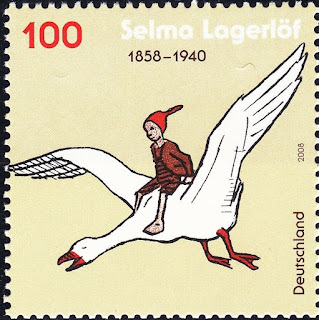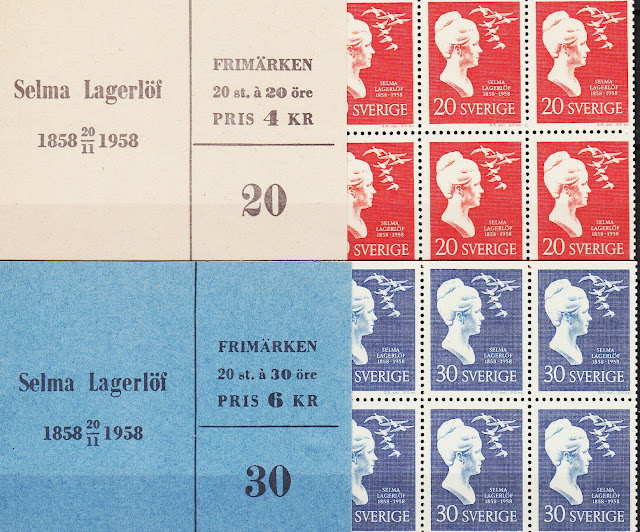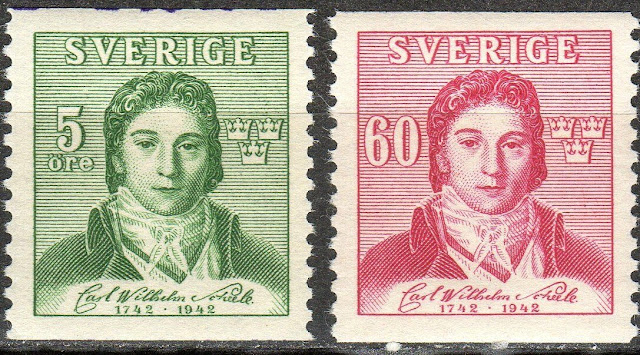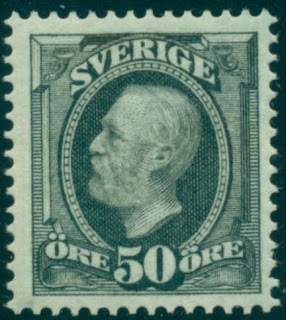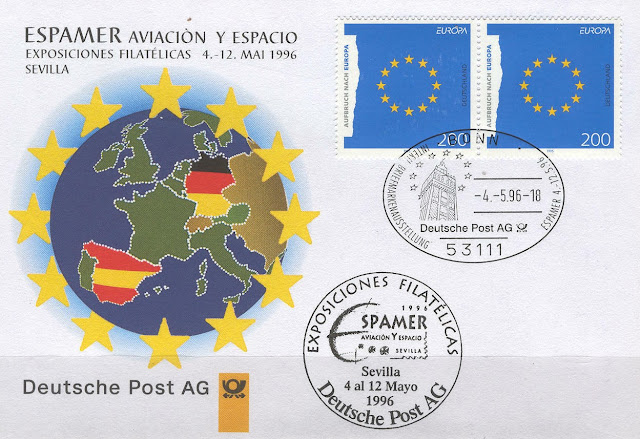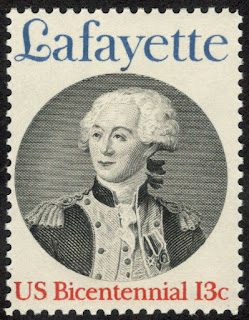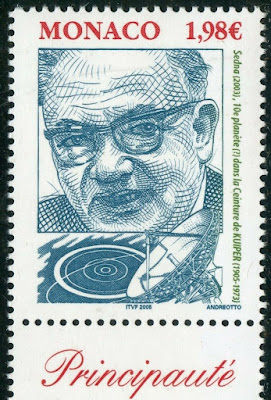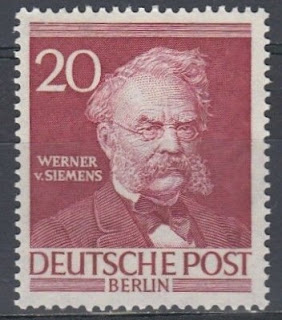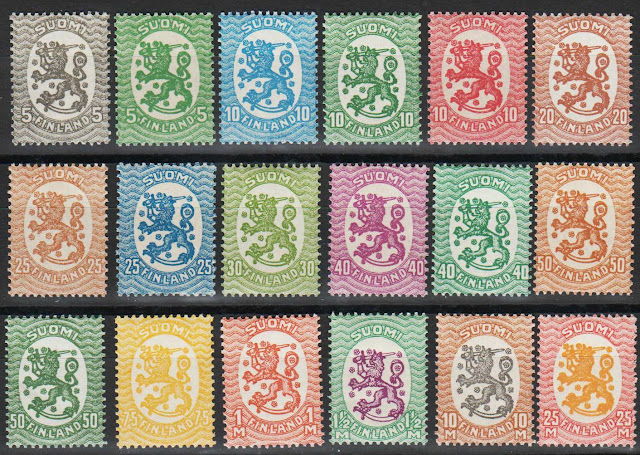Here are some events that happened on December 11th. It could be an event or a person that died or was born on that day
1816 – Indiana becomes the 19th U.S. state.
Indiana is a U.S. state in the Midwestern and Great Lakes regions of North America. Indiana is the 38th-largest by area and the 17th-most populous of the 50 United States. Its capital and largest city is Indianapolis. Indiana was admitted to the United States as the 19th U.S. state on December 11, 1816. Indiana borders Lake Michigan to the northwest, Michigan to the north, Ohio to the east, Kentucky to the south and southeast, and Illinois to the west.
Before becoming a territory, various indigenous peoples and Native Americans inhabited Indiana for thousands of years. Since its founding as a territory, settlement patterns in Indiana have reflected regional cultural segmentation present in the Eastern United States; the state's northernmost tier was settled primarily by people from New England and New York, Central Indiana by migrants from the Mid-Atlantic states and from adjacent Ohio, and Southern Indiana by settlers from the Southern states, particularly Kentucky and Tennessee.
Corydon, a town in the far southern part of Indiana, was named the second capital of the Indiana Territory in May 1813 in order to decrease the threat of Native American raids following the Battle of Tippecanoe. Two years later, a petition for statehood was approved by the territorial general assembly and sent to Congress. An Enabling Act was passed to provide an election of delegates to write a constitution for Indiana. On June 10, 1816, delegates assembled at Corydon to write the constitution, which was completed in 19 days. President James Madison approved Indiana's admission into the union as the nineteenth state on December 11, 1816. In 1825, the state capital was moved from Corydon to Indianapolis
Scott stamp 996 honors the Indiana Territory and depicts William Henry Harrison. Below is that stamp on a First Day Cover
Scott stamp 308 depicts a commemorative seal by artist Paul Wehr, this seal was used in that year’s festivities. Below is the stamp in a block of 4 as well as on a First Day Cover
1843 Born: Robert Koch, German microbiologist and physician, Nobel Prize laureate (d. 1910)
Heinrich Hermann Robert Koch (11 December 1843 – 27 May 1910) was a German physician and microbiologist. As one of the main founders of modern bacteriology, he identified the specific causative agents of tuberculosis, cholera, and anthrax and gave experimental support for the concept of infectious disease, which included experiments on humans and other animals. Koch created and improved laboratory technologies and techniques in the field of microbiology, and made key discoveries in public health. His research led to the creation of Koch's postulates, a series of four generalized principles linking specific microorganisms to specific diseases that remain today the "gold standard" in medical microbiology.
During his time as the government advisor with the Imperial Department of Health in Berlin in the 1880s, Robert Koch became interested in tuberculosis research. At the time, it was widely believed that tuberculosis was an inherited disease. However, Koch was convinced that the disease was caused by a bacterium and was infectious, and tested his four postulates using guinea pigs. Through these experiments, he found that his experiments with tuberculosis satisfied all four of his postulates. In 1882, he published his findings on tuberculosis, in which he reported the causative agent of the disease to be the slow-growing Mycobacterium tuberculosis.
For his research on tuberculosis, Koch received the Nobel Prize in Physiology or Medicine in 1905. The Robert Koch Institute is named in his honor.
1882 Born: Max Born, German physicist and mathematician, Nobel Prize laureate (d. 1970)
Max Born (11 December 1882 – 5 January 1970) was a German-Jewish physicist and mathematician who was instrumental in the development of quantum mechanics. He also made contributions to solid-state physics and optics and supervised the work of a number of notable physicists in the 1920s and 1930s. Born won the 1954 Nobel Prize in Physics for his "fundamental research in quantum mechanics, especially in the statistical interpretation of the wave function".
Born entered the University of Göttingen in 1904, where he found the three renowned mathematicians Felix Klein, David Hilbert, and Hermann Minkowski. He wrote his Ph.D. thesis on the subject of "Stability of Elastica in a Plane and Space", winning the University's Philosophy Faculty Prize. In 1905, he began researching special relativity with Minkowski, and subsequently wrote his habilitation thesis on the Thomson model of the atom. A chance meeting with Fritz Haber in Berlin in 1918 led to discussion of the manner in which an ionic compound is formed when a metal reacts with a halogen, which is today known as the Born–Haber cycle.
In the First World War, after originally being placed as a radio operator, he was moved to research duties regarding sound ranging due to his specialist knowledge. In 1921, Born returned to Göttingen, arranging another chair for his long-time friend and colleague James Franck. Under Born, Göttingen became one of the world's foremost centres for physics. In 1925, Born and Werner Heisenberg formulated the matrix mechanics representation of quantum mechanics. The following year, he formulated the now-standard interpretation of the probability density function for ψ*ψ in the Schrödinger equation, for which he was awarded the Nobel Prize in 1954. His influence extended far beyond his own research. Max Delbrück, Siegfried Flügge, Friedrich Hund, Pascual Jordan, Maria Goeppert-Mayer, Lothar Wolfgang Nordheim, Robert Oppenheimer, and Victor Weisskopf all received their Ph.D. degrees under Born at Göttingen, and his assistants included Enrico Fermi, Werner Heisenberg, Gerhard Herzberg, Friedrich Hund, Pascual Jordan, Wolfgang Pauli, Léon Rosenfeld, Edward Teller, and Eugene Wigner.
In January 1933, the Nazi Party came to power in Germany, and Born, who was Jewish, was suspended from his professorship at the University of Göttingen. He emigrated to the United Kingdom, where he took a job at St John's College, Cambridge, and wrote a popular science book, The Restless Universe, as well as Atomic Physics, which soon became a standard textbook. In October 1936, he became the Tait Professor of Natural Philosophy at the University of Edinburgh, where, working with German-born assistants E. Walter Kellermann and Klaus Fuchs, he continued his research into physics. Born became a naturalised British subject on 31 August 1939, one day before World War II broke out in Europe. He remained at Edinburgh until 1952. He retired to Bad Pyrmont, in West Germany, and died in hospital in Göttingen on 5 January 1970.
German stamp depicting Max Born as well as James Franck
Wednesday, December 11, 2019
Tuesday, December 10, 2019
December 10th in stamps Leopold I, Nobel, Selma Lagerlöf
Here are some events that happened on December 10th. It could be an event or a person that died or was born on that day
1865 Died: Leopold I of Belgium (b. 1790)
Leopold I (16 December 1790 – 10 December 1865) was a German prince who became the first King of the Belgians following the country's independence in 1830. He reigned between July 1831 and December 1865.
Born into the ruling family of the small German duchy of Saxe-Coburg-Saalfeld, Leopold took a commission in the Imperial Russian Army and fought against Napoleon after French troops overran Saxe-Coburg during the Napoleonic Wars. After Napoleon's defeat, Leopold moved to the United Kingdom where he married Princess Charlotte of Wales, who was second in line to the British throne and the only legitimate child of the Prince Regent (the future King George IV). Charlotte died after only a year of marriage, but Leopold continued to enjoy considerable status in Britain.
After the Greek War of Independence (1821–32), Leopold was offered the crown of Greece but turned it down, believing it to be too precarious. Instead, Leopold accepted the kingship of the newly established Kingdom of Belgium in 1831. The Belgian government offered the position to Leopold because of his diplomatic connections with royal houses across Europe, and because as the British-backed candidate, he was not affiliated with other powers, such as France, which were believed to have territorial ambitions in Belgium which might threaten the European balance of power created by the 1815 Congress of Vienna.
Some Leopold I stamps from Belgium
1865 Died: Leopold I of Belgium (b. 1790)
Leopold I (16 December 1790 – 10 December 1865) was a German prince who became the first King of the Belgians following the country's independence in 1830. He reigned between July 1831 and December 1865.
Born into the ruling family of the small German duchy of Saxe-Coburg-Saalfeld, Leopold took a commission in the Imperial Russian Army and fought against Napoleon after French troops overran Saxe-Coburg during the Napoleonic Wars. After Napoleon's defeat, Leopold moved to the United Kingdom where he married Princess Charlotte of Wales, who was second in line to the British throne and the only legitimate child of the Prince Regent (the future King George IV). Charlotte died after only a year of marriage, but Leopold continued to enjoy considerable status in Britain.
After the Greek War of Independence (1821–32), Leopold was offered the crown of Greece but turned it down, believing it to be too precarious. Instead, Leopold accepted the kingship of the newly established Kingdom of Belgium in 1831. The Belgian government offered the position to Leopold because of his diplomatic connections with royal houses across Europe, and because as the British-backed candidate, he was not affiliated with other powers, such as France, which were believed to have territorial ambitions in Belgium which might threaten the European balance of power created by the 1815 Congress of Vienna.
Some Leopold I stamps from Belgium
1896 Died: Alfred Nobel, Swedish chemist and engineer, invented Dynamite and founded the Nobel Prize (b. 1833)
Alfred Bernhard Nobel (21 October 1833 – 10 December 1896) was a Swedish businessman, chemist, engineer, inventor, and philanthropist.
Nobel held 355 different patents, dynamite being the most famous. The synthetic element nobelium was named after him.
Known for inventing dynamite, Nobel also owned Bofors, which he had redirected from its previous role as primarily an iron and steel producer to a major manufacturer of cannon and other armaments.
After reading a premature obituary which condemned him for profiting from the sales of arms, he bequeathed his fortune to institute the Nobel Prizes. His name also survives in modern-day companies such as Dynamit Nobel and AkzoNobel, which are descendants of mergers with companies Nobel himself established.
Stamps from Monaco, Germany and Sweden depicting Alfred Nobel
1909 – Selma Lagerlöf becomes the first female writer to win the Nobel Prize in Literature.
Selma Ottilia Lovisa Lagerlöf (20 November 1858 – 16 March 1940) was a Swedish author and teacher. She published her first novel, Gösta Berling's Saga, at the age of 33. She was the first female writer to win the Nobel Prize in Literature, which she was awarded in 1909. Additionally, she was the first female to be granted a membership in The Swedish Academy in 1914.
On 10 December 1909, Selma Lagerlöf won the Nobel Prize "in appreciation of the lofty idealism, vivid imagination, and spiritual perception that characterize her writings", but the decision was preceded by harsh internal power struggle within the Swedish Academy, the body that awards the Nobel Prize in literature. During her acceptance speech, she remained humble and told a fantastic story of her father, as she visited him in heaven. In the story, she asks her father for help with the debt she owes and her father explains the debt is from all the people who supported her throughout her career. In 1904, the Academy had awarded her its great gold medal, and in 1914, she also became a member of the academy. For both the academy membership and her Nobel literature prize, she was the first woman to be so honored. In 1991, she became the first woman to be depicted on a Swedish banknote, when the first 20-kronor note was released.
In 1907, she received the degree of doctor of letters from Uppsala University.[10] In 1928, she received an honorary doctorate from the University of Greifswald's Faculty of Arts. At the start of World War II, she sent her Nobel Prize medal and gold medal from the Swedish Academy to the government of Finland to help raise money to fight the Soviet Union.[24] The Finnish government was so touched that it raised the necessary money by other means and returned her medal to her.
Two hotels are named after her in Östra Ämtervik in Sunne, and her home, Mårbacka, is preserved as a museum.
Stamps from Germany, Sweden and Russia depicting Selma Lagerlöf
Monday, December 09, 2019
December 9th in stamps Winckelmann, Scheele, Berthollet
Here are some events that happened on December 9th. It could be an event or a person that died or was born on that day
1717 Born: Johann Joachim Winckelmann, German archaeologist and historian (d. 1768)
Johann Joachim Winckelmann (9 December 1717 – 8 June 1768) was a German art historian and archaeologist. He was a pioneering Hellenist who first articulated the difference between Greek, Greco-Roman and Roman art. "The prophet and founding hero of modern archaeology", Winckelmann was one of the founders of scientific archaeology and first applied the categories of style on a large, systematic basis to the history of art. Many consider him the father of the discipline of art history.
1717 Born: Johann Joachim Winckelmann, German archaeologist and historian (d. 1768)
Johann Joachim Winckelmann (9 December 1717 – 8 June 1768) was a German art historian and archaeologist. He was a pioneering Hellenist who first articulated the difference between Greek, Greco-Roman and Roman art. "The prophet and founding hero of modern archaeology", Winckelmann was one of the founders of scientific archaeology and first applied the categories of style on a large, systematic basis to the history of art. Many consider him the father of the discipline of art history.
He was one of the first to separate Greek Art into periods, and time classifications. His would be the decisive influence on the rise of the neoclassical movement during the late 18th century. His writings influenced not only a new science of archaeology and art history but Western painting, sculpture, literature and even philosophy. Winckelmann's History of Ancient Art (1764) was one of the first books written in German to become a classic of European literature. His subsequent influence on Lessing, Herder, Goethe, Hölderlin, Heine, Nietzsche, George, and Spengler has been provocatively called "the Tyranny of Greece over Germany."
Stamps from Germany and East Germany depicting Winckelmann
1742 Born: Carl Wilhelm Scheele, Swedish Pomeranian and German pharmaceutical chemist (d. 1786)
Carl Wilhelm Scheele (9 December 1742 – 21 May 1786) was a Swedish Pomeranian and German pharmaceutical chemist. Isaac Asimov called him "hard-luck Scheele" because he made a number of chemical discoveries before others who are generally given the credit. For example, Scheele discovered oxygen (although Joseph Priestley published his findings first), and identified molybdenum, tungsten, barium, hydrogen, and chlorine before Humphry Davy, among others. Scheele discovered organic acids tartaric, oxalic, uric, lactic, and citric, as well as hydrofluoric, hydrocyanic, and arsenic acids. He preferred speaking German to Swedish his whole life, as German was commonly spoken among Swedish pharmacists.
Swedish stamps issued to commemorate Scheele
1748 Born: Claude Louis Berthollet, French chemist and academic (d. 1822)
Claude Louis Berthollet (9 December 1748 in Talloires, France – 6 November 1822 in Arcueil, France) was a Savoyard-French chemist who became vice president of the French Senate in 1804. He is known for his scientific contributions to theory of chemical equilibria via the mechanism of reverse chemical reactions, and for his contribution to modern chemical nomenclature. On a practical basis, Berthollet was the first to demonstrate the bleaching action of chlorine gas, and was first to develop a solution of sodium hypochlorite as a modern bleaching agent.
French stamp depicting Berthollet
Stamps from Germany and East Germany depicting Winckelmann
1742 Born: Carl Wilhelm Scheele, Swedish Pomeranian and German pharmaceutical chemist (d. 1786)
Carl Wilhelm Scheele (9 December 1742 – 21 May 1786) was a Swedish Pomeranian and German pharmaceutical chemist. Isaac Asimov called him "hard-luck Scheele" because he made a number of chemical discoveries before others who are generally given the credit. For example, Scheele discovered oxygen (although Joseph Priestley published his findings first), and identified molybdenum, tungsten, barium, hydrogen, and chlorine before Humphry Davy, among others. Scheele discovered organic acids tartaric, oxalic, uric, lactic, and citric, as well as hydrofluoric, hydrocyanic, and arsenic acids. He preferred speaking German to Swedish his whole life, as German was commonly spoken among Swedish pharmacists.
Swedish stamps issued to commemorate Scheele
1748 Born: Claude Louis Berthollet, French chemist and academic (d. 1822)
Claude Louis Berthollet (9 December 1748 in Talloires, France – 6 November 1822 in Arcueil, France) was a Savoyard-French chemist who became vice president of the French Senate in 1804. He is known for his scientific contributions to theory of chemical equilibria via the mechanism of reverse chemical reactions, and for his contribution to modern chemical nomenclature. On a practical basis, Berthollet was the first to demonstrate the bleaching action of chlorine gas, and was first to develop a solution of sodium hypochlorite as a modern bleaching agent.
French stamp depicting Berthollet
Sunday, December 08, 2019
December 8th in stamps Flag of Europe, Gustaf V of Sweden, Ivan Gundulic, Oscar II of Sweden, Bjørnstjerne Bjørnson
Here are some events that happened on December 8th. It could be an event or a person that died or was born on that day
1638 Died: Ivan Gundulić, Croatian poet (b. 1589)
Ivan Franov Gundulić also Gianfrancesco Gondola (8 January 1589 – 8 December 1638), better known today as Ivan Gundulić, was the most prominent Baroque poet from the Republic of Ragusa. His work embodies central characteristics of Roman Catholic Counter-Reformation: religious fervor, insistence on "vanity of this world" and zeal in opposition to "infidels". Gundulić's major works—the epic poem Osman, the pastoral play Dubravka, and the religious poem Tears of the Prodigal Son (based on the Parable of the Prodigal Son) are examples of Baroque stylistic richness and, frequently, rhetorical excess. In Croatia, Gundulić is considered to be the most notable Croatian Baroqoe poet, while in Serbia he is seen as an integral part of Serbian literature
1818 Born: Charles III, Prince of Monaco (d. 1889)
Charles III (8 December 1818 – 10 September 1889) was Prince of Monaco and Duke of Valentinois from 20 June 1856 to his death. He was the founder of the famous casino in Monte Carlo, as his title in Monegasque and Italian was Carlo III.
He was born in Paris Charles Honoré Grimaldi, the only son of Florestan I of Monaco and Maria Caroline Gibert de Lametz.
1832 Born: Bjørnstjerne Bjørnson, Norwegian-French author and playwright, Nobel Prize laureate (d. 1910)
Bjørnstjerne Martinius Bjørnson (8 December 1832 – 26 April 1910) was a Norwegian writer who received the 1903 Nobel Prize in Literature "as a tribute to his noble, magnificent and versatile poetry, which has always been distinguished by both the freshness of its inspiration and the rare purity of its spirit", becoming the first Norwegian Nobel laureate.
He was a prolific polemicist and extremely influential in Norwegian public life and Scandinavian cultural debate. Bjørnson is considered to be one of The Four Greats (De Fire Store) among Norwegian writers, the others being Henrik Ibsen, Jonas Lie, and Alexander Kielland. Bjørnson is also celebrated for his lyrics to the Norwegian National Anthem, "Ja, vi elsker dette landet". Composer Fredrikke Waaler based a composition for voice and piano (Spinnersken) on text by Bjørnson.
Norwegian stamps depicting Bjørnstjerne Bjørnson
Norwegian stamps depicting Bjørnstjerne Bjørnson
1907 – King Gustaf V of Sweden accedes to the Swedish throne.
Gustaf V (Oscar Gustaf Adolf; 16 June 1858 – 29 October 1950) was King of Sweden from 1907 until his death in 1950. He was the eldest son of King Oscar II of Sweden and Sophia of Nassau, a half-sister of Adolphe, Grand Duke of Luxembourg. Reigning from the death of his father Oscar II in 1907 until his own death 43 years later, he holds the record of being the oldest monarch of Sweden and the third-longest reigning after Magnus IV and Carl XVI Gustaf. He was also the last Swedish monarch to exercise his royal prerogatives, which largely died with him, although formally abolished only with the remaking of the Swedish constitution in 1974. He was the first Swedish king since the High Middle Ages not to have a coronation and hence never wore a crown, a tradition continuing to date.
Gustaf's early reign saw the rise of parliamentary rule in Sweden, although the leadup to World War I pre-empted his overthrow of Liberal Prime Minister Karl Staaff in 1914, replacing him with his own figurehead Hjalmar Hammarskjöld (father of Dag Hammarskjöld) for most of the war. However, after the Liberals and Social Democrats secured a parliamentary majority under Staaff's successor, Nils Edén, he allowed Edén to form a new government which de facto stripped the monarchy of all virtual powers and enacted universal and equal suffrage, including for women, by 1919. Bowing fully to the principles of parliamentary democracy, he remained a popular figurehead for the remaining 31 years of his rule, although not completely without influence – during World War II he allegedly urged Per Albin Hansson's coalition government to accept requests from Nazi Germany for logistics support, refusing which might have provoked an invasion. This remains controversial to date, although he is not known to have shown much support for fascism or radical nationalism; his pro-German and anti-Communist stance was well known also in World War I.
Following his death at age 92, he was implicated in a homosexual affair in the Haijby affair. His alleged lover Kurt Haijby was imprisoned in 1952 for blackmail of the court in the 1930s. (Homosexuality was a criminal offense in Sweden until 1944, though Gustaf's position would have granted automatic immunity.) An avid hunter and sportsman, he presided over the 1912 Olympic Games and chaired the Swedish Association of Sports from 1897 to 1907. Most notably, he represented Sweden (under the alias of Mr G.) as a competitive tennis player, keeping up competitive tennis until his 80s, when his eyesight deteriorated rapidly. He died from flu complications and was succeeded by his son, Gustaf VI Adolf.
Stamps from Sweden depicting King Gustaf V
1907 Died: Oscar II of Sweden (b. 1829)
Oscar II (Oscar Fredrik; 21 January 1829 – 8 December 1907) was the King of Sweden from 1872 until his death, and was also the final King of Norway from the House of Bernadotte until being deposed in 1905.
Oscar II was King during a time when both Sweden and Norway were undergoing a period of industrialization and rapid technological progress. His reign also saw the gradual decline of the Union of Sweden and Norway, which culminated in its dissolution in 1905. He was subsequently succeeded as King of Norway by his grandnephew Prince Carl of Denmark under the regnal name Haakon VII, and as King of Sweden by his eldest son, Gustaf V.
Oscar II is the paternal great-great-grandfather of Carl XVI Gustaf, King of Sweden since 1973. Harald V, King of Norway since 1991, is a great-grandson of Oscar II, through his third son Prince Carl, Duke of Västergötland.
Swedish stamps depicting Oscar II
The Flag of Europe or European Flag, is an official symbol adopted by two separate organisations, the Council of Europe (CoE) as a symbol for the whole of Europe and the European Union (EU). It consists of a circle of twelve five-pointed yellow (or) stars on a blue (azure) field.
The design was conceived in 1955, and officially adopted later that year by the Council of Europe as a symbol for the whole of Europe. The Council of Europe urged it to be adopted by other European organisations, and in 1985 the European Communities (EC) adopted it.
The EU inherited the emblem's use when it was formed in 1993, being the successor organisation to the EC starting from 1 December 2009 (date of entry into force of the Lisbon Treaty). It has been in wide official use by the EC since the 1990s, but it has never been given official status in any of the EU's treaties. Its adoption as an official symbol of the EU was planned as part of the proposed 2004 European Constitution, which failed to be ratified in 2005.
The flag is used by different European organisations such as the European Space Agency and unified European sporting teams under the name of Team Europe .
French stamp and German cover depicting the European flag
Saturday, December 07, 2019
December 7th in stamps Gerard Kuiper, Royal Opera House, Gian Lorenzo Bernini, Lafayette, Élie Ducommun
Here are some events that happened on December 7th. It could be an event or a person that died or was born on that day
1598 Born: Gian Lorenzo Bernini, Italian sculptor and painter (d. 1680)
Gian Lorenzo (or Gianlorenzo) Bernini (7 December 1598 – 28 November 1680) was an Italian sculptor and architect. While a major figure in the world of architecture, he was, also and even more prominently, the leading sculptor of his age, credited with creating the Baroque style of sculpture. As one scholar has commented, "What Shakespeare is to drama, Bernini may be to sculpture: the first pan-European sculptor whose name is instantaneously identifiable with a particular manner and vision, and whose influence was inordinately powerful...." In addition, he was a painter (mostly small canvases in oil) and a man of the theater: he wrote, directed and acted in plays (mostly Carnival satires), for which he designed stage sets and theatrical machinery. He produced designs as well for a wide variety of decorative art objects including lamps, tables, mirrors, and even coaches.
As architect and city planner, he designed secular buildings, churches, chapels, and public squares, as well as massive works combining both architecture and sculpture, especially elaborate public fountains and funerary monuments and a whole series of temporary structures (in stucco and wood) for funerals and festivals. His broad technical versatility, boundless compositional inventiveness and sheer skill in manipulating marble ensured that he would be considered a worthy successor of Michelangelo, far outshining other sculptors of his generation. His talent extended beyond the confines of sculpture to a consideration of the setting in which it would be situated; his ability to synthesize sculpture, painting, and architecture into a coherent conceptual and visual whole has been termed by the late art historian Irving Lavin the "unity of the visual arts".
Stamps from Monaco and the Vatican depicting Bernini or his works
1732 – The Royal Opera House opens at Covent Garden, London, England.
The Royal Opera House (ROH) is an opera house and major performing arts venue in Covent Garden, central London. The large building is often referred to as simply "Covent Garden", after a previous use of the site of the opera house's original construction in 1732. It is the home of The Royal Opera, The Royal Ballet, and the Orchestra of the Royal Opera House. Originally called the Theatre Royal, it served primarily as a playhouse for the first hundred years of its history. In 1734, the first ballet was presented. A year later, Handel's first season of operas began. Many of his operas and oratorios were specifically written for Covent Garden and had their premieres there.
The current building is the third theatre on the site following disastrous fires in 1808 and 1856. The façade, foyer, and auditorium date from 1858, but almost every other element of the present complex dates from an extensive reconstruction in the 1990s. The main auditorium seats 2,256 people, making it the third largest in London, and consists of four tiers of boxes and balconies and the amphitheatre gallery. The proscenium is 12.20 m wide and 14.80 m high. The main auditorium is a Grade I listed building.
Stamp from Great Britain depicting the Royal Opera House
1776 – Gilbert du Motier, Marquis de Lafayette, arranges to enter the American military as a major general.
Marie-Joseph Paul Yves Roch Gilbert du Motier, Marquis de Lafayette (6 September 1757 – 20 May 1834), known in the United States simply as Lafayette, was a French aristocrat and military officer who fought in the American Revolutionary War, commanding American troops in several battles, including the Siege of Yorktown. After returning to France, he was a key figure in the French Revolution of 1789 and the July Revolution of 1830.
Lafayette was born into a wealthy land-owning family in Chavaniac in the province of Auvergne in south central France. He followed the family's martial tradition and was commissioned an officer at age 13. He became convinced that the American revolutionary cause was noble, and he traveled to the New World seeking glory in it. He was made a major general at age 19, but he was initially not given American troops to command. He was wounded during the Battle of Brandywine but still managed to organize an orderly retreat, and he served with distinction in the Battle of Rhode Island. In the middle of the war, he sailed for home to lobby for an increase in French support. He returned to America in 1780 and was given senior positions in the Continental Army. In 1781, troops under his command in Virginia blocked forces led by Cornwallis until other American and French forces could position themselves for the decisive Siege of Yorktown.
Lafayette returned to France and was appointed to the Assembly of Notables in 1787, convened in response to the fiscal crisis. He was elected a member of the Estates General of 1789, where representatives met from the three traditional orders of French society: the clergy, the nobility, and the commoners. After forming the National Constituent Assembly, he helped to write the Declaration of the Rights of Man and of the Citizen with Thomas Jefferson's assistance. This document was inspired by the United States Declaration of Independence and invoked natural law to establish basic principles of the democratic nation-state. He also advocated the end of slavery, in keeping with the philosophy of natural liberty. After the storming of the Bastille, he was appointed commander-in-chief of France's National Guard and tried to steer a middle course through the years of revolution. In August 1792, radical factions ordered his arrest, and he fled into the Austrian Netherlands. He was captured by Austrian troops and spent more than five years in prison.
Lafayette returned to France after Napoleon Bonaparte secured his release in 1797, though he refused to participate in Napoleon's government. After the Bourbon Restoration of 1814, he became a liberal member of the Chamber of Deputies, a position which he held for most of the remainder of his life. In 1824, President James Monroe invited him to the United States as the nation's guest, and he visited all 24 states in the union and met a rapturous reception. During France's July Revolution of 1830, he declined an offer to become the French dictator. Instead, he supported Louis-Philippe as king, but turned against him when the monarch became autocratic. He died on 20 May 1834 and is buried in Picpus Cemetery in Paris, under soil from Bunker Hill. He is sometimes known as "The Hero of the Two Worlds" for his accomplishments in the service of both France and the United States.
US stamp and First Day Cover depicting Lafayette
1905 Born: Gerard Kuiper, Dutch-American astronomer and academic (d. 1973)
Gerard Peter Kuiper (born Gerrit Pieter Kuiper; December 7, 1905 – December 23, 1973) was a Dutch astronomer, planetary scientist, selenographer, author and professor. He is the eponymous namesake of the Kuiper belt. Kuiper is considered by many to be the father of modern planetary science. As professor at the University of Chicago, he was dissertation advisor to Carl Sagan. In 1958, the two worked on the classified military Project A119, the secret Air Force plan to detonate a nuclear warhead on the Moon.
Kuiper discovered two natural satellites of planets in the Solar System, namely Uranus's satellite Miranda and Neptune's satellite Nereid. In addition, he discovered carbon dioxide in the atmosphere of Mars and the existence of a methane-laced atmosphere above Saturn's satellite Titan in 1944. Kuiper also pioneered airborne infrared observing using a Convair 990 aircraft in the 1960s.
Kuiper spent most of his career at the University of Chicago, but moved to Tucson, Arizona, in 1960 to found the Lunar and Planetary Laboratory at the University of Arizona. Kuiper was the laboratory's director until his death in 1973: while on vacation with his wife in Mexico he had a heart attack. One of the three buildings at Arizona that makes up the LPL is named in his honor.
In the 1950s Kuiper's interdisciplinary collaboration with the geochemist and Nobel Laureate Harold C. Urey to understand the Moon's thermal evolution descended into acrimony, as the two engaged in what became known as the “Hot Moon Cold Moon” controversy. Their falling out, in part a scientific dispute, also reflected the challenge of maintaining professional relationships across overlapping but distinct scientific disciplines.
In the 1960s, Kuiper helped identify landing sites on the Moon for the Apollo program. His earlier work on the Moon included the secret Project A119, the secret Air Force plan to detonate a nuclear warhead on the Moon. Another scientist in the group was Carl Sagan, who was Kuiper's PhD student at the time of the project.
Kuiper discovered several binary stars which received "Kuiper numbers" to identify them, such as KUI 79.
Stamp from Monaco depicting Kuiper
Élie Ducommun (19 February 1833, Geneva – 7 December 1906, Bern) was a Swiss peace activist. He was a Nobel laureate, awarded the 1902 Nobel Peace Prize, which he shared with Charles Albert Gobat.
Born in Geneva, he worked as a tutor, language teacher, journalist and a translator for the Swiss federal Chancellery (1869–1873).
In 1867 he helped to found the Ligue de la paix et de la liberté (League of Peace and Freedom), though he continued working at other positions, including secretary for the Jura-Simplon Steel Company from 1873 to 1891. That year, he was appointed director of the newly formed Bureau international de la paix (International Peace Office), the first non-governmental international peace organization, based in Bern. He refused to accept a salary for the position, stating that he wished to serve in this capacity solely for reasons of idealism.
His keen organizational skills ensured the group's success. He was awarded in the Nobel Peace Prize in 1902, and served as director of the organization until his death in 1906.
1598 Born: Gian Lorenzo Bernini, Italian sculptor and painter (d. 1680)
Gian Lorenzo (or Gianlorenzo) Bernini (7 December 1598 – 28 November 1680) was an Italian sculptor and architect. While a major figure in the world of architecture, he was, also and even more prominently, the leading sculptor of his age, credited with creating the Baroque style of sculpture. As one scholar has commented, "What Shakespeare is to drama, Bernini may be to sculpture: the first pan-European sculptor whose name is instantaneously identifiable with a particular manner and vision, and whose influence was inordinately powerful...." In addition, he was a painter (mostly small canvases in oil) and a man of the theater: he wrote, directed and acted in plays (mostly Carnival satires), for which he designed stage sets and theatrical machinery. He produced designs as well for a wide variety of decorative art objects including lamps, tables, mirrors, and even coaches.
As architect and city planner, he designed secular buildings, churches, chapels, and public squares, as well as massive works combining both architecture and sculpture, especially elaborate public fountains and funerary monuments and a whole series of temporary structures (in stucco and wood) for funerals and festivals. His broad technical versatility, boundless compositional inventiveness and sheer skill in manipulating marble ensured that he would be considered a worthy successor of Michelangelo, far outshining other sculptors of his generation. His talent extended beyond the confines of sculpture to a consideration of the setting in which it would be situated; his ability to synthesize sculpture, painting, and architecture into a coherent conceptual and visual whole has been termed by the late art historian Irving Lavin the "unity of the visual arts".
Stamps from Monaco and the Vatican depicting Bernini or his works
1732 – The Royal Opera House opens at Covent Garden, London, England.
The Royal Opera House (ROH) is an opera house and major performing arts venue in Covent Garden, central London. The large building is often referred to as simply "Covent Garden", after a previous use of the site of the opera house's original construction in 1732. It is the home of The Royal Opera, The Royal Ballet, and the Orchestra of the Royal Opera House. Originally called the Theatre Royal, it served primarily as a playhouse for the first hundred years of its history. In 1734, the first ballet was presented. A year later, Handel's first season of operas began. Many of his operas and oratorios were specifically written for Covent Garden and had their premieres there.
The current building is the third theatre on the site following disastrous fires in 1808 and 1856. The façade, foyer, and auditorium date from 1858, but almost every other element of the present complex dates from an extensive reconstruction in the 1990s. The main auditorium seats 2,256 people, making it the third largest in London, and consists of four tiers of boxes and balconies and the amphitheatre gallery. The proscenium is 12.20 m wide and 14.80 m high. The main auditorium is a Grade I listed building.
Stamp from Great Britain depicting the Royal Opera House
1776 – Gilbert du Motier, Marquis de Lafayette, arranges to enter the American military as a major general.
Marie-Joseph Paul Yves Roch Gilbert du Motier, Marquis de Lafayette (6 September 1757 – 20 May 1834), known in the United States simply as Lafayette, was a French aristocrat and military officer who fought in the American Revolutionary War, commanding American troops in several battles, including the Siege of Yorktown. After returning to France, he was a key figure in the French Revolution of 1789 and the July Revolution of 1830.
Lafayette was born into a wealthy land-owning family in Chavaniac in the province of Auvergne in south central France. He followed the family's martial tradition and was commissioned an officer at age 13. He became convinced that the American revolutionary cause was noble, and he traveled to the New World seeking glory in it. He was made a major general at age 19, but he was initially not given American troops to command. He was wounded during the Battle of Brandywine but still managed to organize an orderly retreat, and he served with distinction in the Battle of Rhode Island. In the middle of the war, he sailed for home to lobby for an increase in French support. He returned to America in 1780 and was given senior positions in the Continental Army. In 1781, troops under his command in Virginia blocked forces led by Cornwallis until other American and French forces could position themselves for the decisive Siege of Yorktown.
Lafayette returned to France and was appointed to the Assembly of Notables in 1787, convened in response to the fiscal crisis. He was elected a member of the Estates General of 1789, where representatives met from the three traditional orders of French society: the clergy, the nobility, and the commoners. After forming the National Constituent Assembly, he helped to write the Declaration of the Rights of Man and of the Citizen with Thomas Jefferson's assistance. This document was inspired by the United States Declaration of Independence and invoked natural law to establish basic principles of the democratic nation-state. He also advocated the end of slavery, in keeping with the philosophy of natural liberty. After the storming of the Bastille, he was appointed commander-in-chief of France's National Guard and tried to steer a middle course through the years of revolution. In August 1792, radical factions ordered his arrest, and he fled into the Austrian Netherlands. He was captured by Austrian troops and spent more than five years in prison.
Lafayette returned to France after Napoleon Bonaparte secured his release in 1797, though he refused to participate in Napoleon's government. After the Bourbon Restoration of 1814, he became a liberal member of the Chamber of Deputies, a position which he held for most of the remainder of his life. In 1824, President James Monroe invited him to the United States as the nation's guest, and he visited all 24 states in the union and met a rapturous reception. During France's July Revolution of 1830, he declined an offer to become the French dictator. Instead, he supported Louis-Philippe as king, but turned against him when the monarch became autocratic. He died on 20 May 1834 and is buried in Picpus Cemetery in Paris, under soil from Bunker Hill. He is sometimes known as "The Hero of the Two Worlds" for his accomplishments in the service of both France and the United States.
US stamp and First Day Cover depicting Lafayette
1905 Born: Gerard Kuiper, Dutch-American astronomer and academic (d. 1973)
Gerard Peter Kuiper (born Gerrit Pieter Kuiper; December 7, 1905 – December 23, 1973) was a Dutch astronomer, planetary scientist, selenographer, author and professor. He is the eponymous namesake of the Kuiper belt. Kuiper is considered by many to be the father of modern planetary science. As professor at the University of Chicago, he was dissertation advisor to Carl Sagan. In 1958, the two worked on the classified military Project A119, the secret Air Force plan to detonate a nuclear warhead on the Moon.
Kuiper discovered two natural satellites of planets in the Solar System, namely Uranus's satellite Miranda and Neptune's satellite Nereid. In addition, he discovered carbon dioxide in the atmosphere of Mars and the existence of a methane-laced atmosphere above Saturn's satellite Titan in 1944. Kuiper also pioneered airborne infrared observing using a Convair 990 aircraft in the 1960s.
Kuiper spent most of his career at the University of Chicago, but moved to Tucson, Arizona, in 1960 to found the Lunar and Planetary Laboratory at the University of Arizona. Kuiper was the laboratory's director until his death in 1973: while on vacation with his wife in Mexico he had a heart attack. One of the three buildings at Arizona that makes up the LPL is named in his honor.
In the 1950s Kuiper's interdisciplinary collaboration with the geochemist and Nobel Laureate Harold C. Urey to understand the Moon's thermal evolution descended into acrimony, as the two engaged in what became known as the “Hot Moon Cold Moon” controversy. Their falling out, in part a scientific dispute, also reflected the challenge of maintaining professional relationships across overlapping but distinct scientific disciplines.
In the 1960s, Kuiper helped identify landing sites on the Moon for the Apollo program. His earlier work on the Moon included the secret Project A119, the secret Air Force plan to detonate a nuclear warhead on the Moon. Another scientist in the group was Carl Sagan, who was Kuiper's PhD student at the time of the project.
Kuiper discovered several binary stars which received "Kuiper numbers" to identify them, such as KUI 79.
Stamp from Monaco depicting Kuiper
1906 Died: Élie Ducommun, Swiss journalist and educator, Nobel Prize laureate (b. 1833)
Élie Ducommun (19 February 1833, Geneva – 7 December 1906, Bern) was a Swiss peace activist. He was a Nobel laureate, awarded the 1902 Nobel Peace Prize, which he shared with Charles Albert Gobat.
Born in Geneva, he worked as a tutor, language teacher, journalist and a translator for the Swiss federal Chancellery (1869–1873).
In 1867 he helped to found the Ligue de la paix et de la liberté (League of Peace and Freedom), though he continued working at other positions, including secretary for the Jura-Simplon Steel Company from 1873 to 1891. That year, he was appointed director of the newly formed Bureau international de la paix (International Peace Office), the first non-governmental international peace organization, based in Bern. He refused to accept a salary for the position, stating that he wished to serve in this capacity solely for reasons of idealism.
His keen organizational skills ensured the group's success. He was awarded in the Nobel Peace Prize in 1902, and served as director of the organization until his death in 1906.
Stamp issued by Guinea Bissau depicting Élie Ducommun
Friday, December 06, 2019
December 6th in stamps Chardin, WIllem II, Finland declares independence, Siemens, Alfred Escher
Here are some events that happened on December 6th. It could be an event or a person that died or was born on that day
1779 Died: Jean-Baptiste-Siméon Chardin, French painter (b. 1699)
Jean-Baptiste-Siméon Chardin (November 2, 1699 – December 6, 1779[1]) was an 18th-century French painter. He is considered a master of still life, and is also noted for his genre paintings which depict kitchen maids, children, and domestic activities. Carefully balanced composition, soft diffusion of light, and granular impasto characterize his work.
Chardin's influence on the art of the modern era was wide-ranging, and has been well-documented. Édouard Manet's half-length Boy Blowing Bubbles and the still lifes of Paul Cézanne are equally indebted to their predecessor. He was one of Henri Matisse's most admired painters; as an art student Matisse made copies of four Chardin paintings in the Louvre. Chaim Soutine's still lifes looked to Chardin for inspiration, as did the paintings of Georges Braque, and later, Giorgio Morandi. In 1999 Lucian Freud painted and etched several copies after The Young Schoolmistress (National Gallery, London).
Stamps from France and a stamp from the United States commemorating Chardin
1792 Born: William II of the Netherlands (d. 1849)
William II (Willem Frederik George Lodewijk, anglicized as William Frederick George Louis; 6 December 1792 – 17 March 1849) was King of the Netherlands, Grand Duke of Luxembourg, and Duke of Limburg.
William II was the son of William I and Wilhelmine of Prussia. When his father, who up to that time ruled as sovereign prince, proclaimed himself king in 1815, he became Prince of Orange as heir apparent of the Kingdom of the Netherlands. With the abdication of his father on 7 October 1840, William II became king. During his reign, the Netherlands became a parliamentary democracy with the new constitution of 1848.
William II was married to Anna Pavlovna of Russia. They had four sons and one daughter. William II died on 17 March 1849 and was succeeded by his son William III.
Dutch stamps from 1913 depicting Willem II
1892 Died: Werner von Siemens, German engineer and businessman, founded the Siemens Company (b. 1816)
Ernst Werner Siemens (von Siemens from 1888; 13 December 1816 – 6 December 1892) was a German electrical engineer, inventor and industrialist. Siemens's name has been adopted as the SI unit of electrical conductance, the siemens. He was also the founder of the electrical and telecommunications company Siemens.
Ernst Werner Siemens was born in Lenthe, today part of Gehrden, near Hannover, in the Kingdom of Hanover in the German Confederation, the fourth child (of fourteen) of a tenant farmer of the Siemens family, an old family of Goslar, documented since 1384. He was a brother of Carl Heinrich von Siemens and Carl Wilhelm Siemens, sons of Christian Ferdinand Siemens (31 July 1787 – 16 January 1840) and wife Eleonore Deichmann (1792 – 8 July 1839).
After finishing school, Siemens intended to study at the Bauakademie Berlin. However, since his family was highly indebted and thus could not afford to pay the tuition fees, he chose to join the Prussian Military Academy's School of Artillery and Engineering, between the years 1835-1838, instead, where he received his officers training. Siemens was thought of as a good soldier, receiving various medals, and inventing electrically-charged sea mines, which were used to combat a Danish blockade of Kiel.
Upon returning home from war, he chose to work on perfecting technologies that had already been established and eventually became known worldwide for his advances in various technologies. In 1843 he sold the rights to his first invention to Elkington of Birmingham. Siemens invented a telegraph that used a needle to point to the right letter, instead of using Morse code. Based on this invention, he founded the company Telegraphen-Bauanstalt von Siemens & Halske on 1 October 1847, with the company opening a workshop on 12 October.
The company was internationalised soon after its founding. One brother of Werner represented him in England (Sir William Siemens) and another in St. Petersburg, Russia (Carl von Siemens), each earning recognition. Following his industrial career, he was ennobled in 1888, becoming Werner von Siemens. He retired from his company in 1890 and died in 1892 in Berlin.
The company, reorganized as Siemens & Halske AG, Siemens-Schuckertwerke and – since 1966 – Siemens AG was later led by his brother Carl, his sons Arnold, Wilhelm, and Carl Friedrich, his grandsons Hermann and Ernst and his great-grandson Peter von Siemens. Siemens AG is one of the largest electrotechnological firms in the world. The von Siemens family still owns 6% of the company shares (as of 2013) and holds a seat on the supervisory board, being the largest shareholder.
Apart from the pointer telegraph Siemens made several contributions to the development of electrical engineering and is therefore known as the founding father of the discipline in Germany. He built the world's first electric elevator in 1880. His company produced the tubes with which Wilhelm Conrad Röntgen investigated x-rays. He claimed invention of the dynamo although others invented it earlier. On 14 December 1877 he received German patent No. 2355 for an electromechanical "dynamic" or moving-coil transducer, which was adapted by A. L. Thuras and E. C. Wente for the Bell System in the late 1920s for use as a loudspeaker. Wente's adaptation was issued US patent 1,707,545 in 1929. Siemens is also the father of the trolleybus which he initially tried and tested with his "Elektromote" on 29 April 1882.
Stamps from Germany and Berlin depicting Siemens
1917 – Finland declares independence from Soviet Russia.
The Finnish Declaration of Independence (Finnish: Suomen itsenäisyysjulistus; Swedish: Finlands självständighetsförklaring; Russian: Провозглашение независимости Финляндии) was adopted by the Parliament of Finland on 6 December 1917. It declared Finland an independent nation, among nations ending its autonomy within Russia as its Grand Duchy of Finland, with reference to a simultaneously delivered bill to the Diet to make Finland an independent republic instead.
On 2 November 1917, the Bolsheviks declared a general right of self-determination, including the right of complete secession, "for the Peoples of Russia". On the same day the Finnish Parliament issued a declaration by which it assumed, pro tempore, all powers of the Sovereign in Finland.
The old Instrument of Government was however no longer deemed suitable. Leading circles had long held monarchism and hereditary nobility to be antiquated, and advocated a republican constitution for Finland.
The Senate of Finland, the government that the Parliament had appointed in November, drafted a Declaration of Independence and a proposal for a new republican Instrument of Government. Chairman of the Senate (a.k.a. Prime minister) Pehr Evind Svinhufvud read the Declaration to the Parliament on 4 December. The Declaration of Independence was technically given the form of a preamble of the proposition, and was intended to be agreed by the Parliament, which adopted the Declaration on 6 December.
Declaring the independence was only part of the long process leading to the independence of Finland. The declaration is celebrated as the Independence Day in Finland.
Chardin's influence on the art of the modern era was wide-ranging, and has been well-documented. Édouard Manet's half-length Boy Blowing Bubbles and the still lifes of Paul Cézanne are equally indebted to their predecessor. He was one of Henri Matisse's most admired painters; as an art student Matisse made copies of four Chardin paintings in the Louvre. Chaim Soutine's still lifes looked to Chardin for inspiration, as did the paintings of Georges Braque, and later, Giorgio Morandi. In 1999 Lucian Freud painted and etched several copies after The Young Schoolmistress (National Gallery, London).
Stamps from France and a stamp from the United States commemorating Chardin
1792 Born: William II of the Netherlands (d. 1849)
William II (Willem Frederik George Lodewijk, anglicized as William Frederick George Louis; 6 December 1792 – 17 March 1849) was King of the Netherlands, Grand Duke of Luxembourg, and Duke of Limburg.
William II was the son of William I and Wilhelmine of Prussia. When his father, who up to that time ruled as sovereign prince, proclaimed himself king in 1815, he became Prince of Orange as heir apparent of the Kingdom of the Netherlands. With the abdication of his father on 7 October 1840, William II became king. During his reign, the Netherlands became a parliamentary democracy with the new constitution of 1848.
William II was married to Anna Pavlovna of Russia. They had four sons and one daughter. William II died on 17 March 1849 and was succeeded by his son William III.
Dutch stamps from 1913 depicting Willem II
1882 Died: Alfred Escher, Swiss businessman and politician (b. 1819)
Johann Heinrich Alfred Escher vom Glas, known as Alfred Escher (20 February 1819 – 6 December 1882) was a Swiss politician, business leader and railways pioneer. Thanks to his numerous political posts and his significant role in the foundation and management of the Swiss Northeastern Railway, the Swiss Federal Institute of Technology, Credit Suisse, Swiss Life and the Gotthard Railway, Escher had an unmatched influence on Switzerland's political and economic development in the 19th century.
Swiss stamps depicting Alfred Escher
Ernst Werner Siemens (von Siemens from 1888; 13 December 1816 – 6 December 1892) was a German electrical engineer, inventor and industrialist. Siemens's name has been adopted as the SI unit of electrical conductance, the siemens. He was also the founder of the electrical and telecommunications company Siemens.
Ernst Werner Siemens was born in Lenthe, today part of Gehrden, near Hannover, in the Kingdom of Hanover in the German Confederation, the fourth child (of fourteen) of a tenant farmer of the Siemens family, an old family of Goslar, documented since 1384. He was a brother of Carl Heinrich von Siemens and Carl Wilhelm Siemens, sons of Christian Ferdinand Siemens (31 July 1787 – 16 January 1840) and wife Eleonore Deichmann (1792 – 8 July 1839).
After finishing school, Siemens intended to study at the Bauakademie Berlin. However, since his family was highly indebted and thus could not afford to pay the tuition fees, he chose to join the Prussian Military Academy's School of Artillery and Engineering, between the years 1835-1838, instead, where he received his officers training. Siemens was thought of as a good soldier, receiving various medals, and inventing electrically-charged sea mines, which were used to combat a Danish blockade of Kiel.
Upon returning home from war, he chose to work on perfecting technologies that had already been established and eventually became known worldwide for his advances in various technologies. In 1843 he sold the rights to his first invention to Elkington of Birmingham. Siemens invented a telegraph that used a needle to point to the right letter, instead of using Morse code. Based on this invention, he founded the company Telegraphen-Bauanstalt von Siemens & Halske on 1 October 1847, with the company opening a workshop on 12 October.
The company was internationalised soon after its founding. One brother of Werner represented him in England (Sir William Siemens) and another in St. Petersburg, Russia (Carl von Siemens), each earning recognition. Following his industrial career, he was ennobled in 1888, becoming Werner von Siemens. He retired from his company in 1890 and died in 1892 in Berlin.
The company, reorganized as Siemens & Halske AG, Siemens-Schuckertwerke and – since 1966 – Siemens AG was later led by his brother Carl, his sons Arnold, Wilhelm, and Carl Friedrich, his grandsons Hermann and Ernst and his great-grandson Peter von Siemens. Siemens AG is one of the largest electrotechnological firms in the world. The von Siemens family still owns 6% of the company shares (as of 2013) and holds a seat on the supervisory board, being the largest shareholder.
Apart from the pointer telegraph Siemens made several contributions to the development of electrical engineering and is therefore known as the founding father of the discipline in Germany. He built the world's first electric elevator in 1880. His company produced the tubes with which Wilhelm Conrad Röntgen investigated x-rays. He claimed invention of the dynamo although others invented it earlier. On 14 December 1877 he received German patent No. 2355 for an electromechanical "dynamic" or moving-coil transducer, which was adapted by A. L. Thuras and E. C. Wente for the Bell System in the late 1920s for use as a loudspeaker. Wente's adaptation was issued US patent 1,707,545 in 1929. Siemens is also the father of the trolleybus which he initially tried and tested with his "Elektromote" on 29 April 1882.
Stamps from Germany and Berlin depicting Siemens
1917 – Finland declares independence from Soviet Russia.
The Finnish Declaration of Independence (Finnish: Suomen itsenäisyysjulistus; Swedish: Finlands självständighetsförklaring; Russian: Провозглашение независимости Финляндии) was adopted by the Parliament of Finland on 6 December 1917. It declared Finland an independent nation, among nations ending its autonomy within Russia as its Grand Duchy of Finland, with reference to a simultaneously delivered bill to the Diet to make Finland an independent republic instead.
On 2 November 1917, the Bolsheviks declared a general right of self-determination, including the right of complete secession, "for the Peoples of Russia". On the same day the Finnish Parliament issued a declaration by which it assumed, pro tempore, all powers of the Sovereign in Finland.
The old Instrument of Government was however no longer deemed suitable. Leading circles had long held monarchism and hereditary nobility to be antiquated, and advocated a republican constitution for Finland.
The Senate of Finland, the government that the Parliament had appointed in November, drafted a Declaration of Independence and a proposal for a new republican Instrument of Government. Chairman of the Senate (a.k.a. Prime minister) Pehr Evind Svinhufvud read the Declaration to the Parliament on 4 December. The Declaration of Independence was technically given the form of a preamble of the proposition, and was intended to be agreed by the Parliament, which adopted the Declaration on 6 December.
Declaring the independence was only part of the long process leading to the independence of Finland. The declaration is celebrated as the Independence Day in Finland.
Subscribe to:
Posts (Atom)








